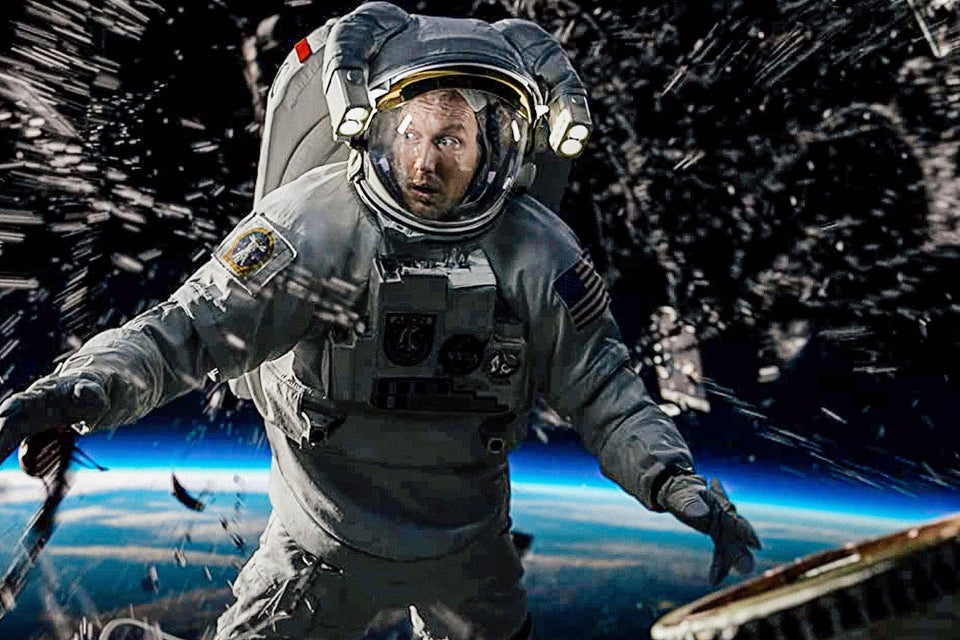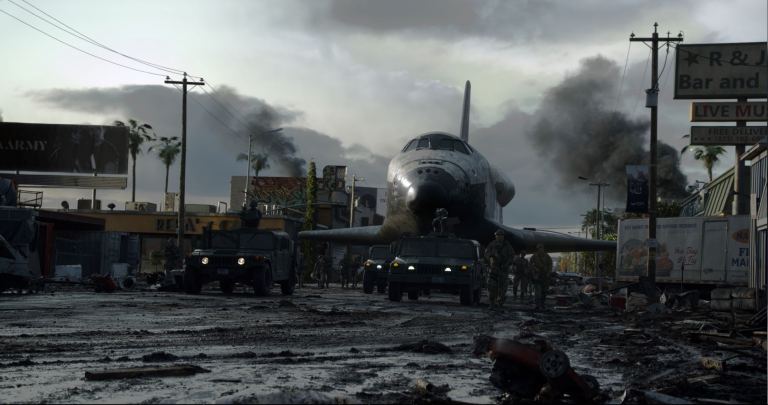The reason of Moonfall is basic, unhinged, and magnificent: Something has taken the moon out of its circle, and very quickly, the moon will slam into the Earth. The main individuals who can stop it are shamed space traveler Brian Harper (Patrick Wilson), NASA Executive Jo Fowler (Halle Berry), and trick scholar K. C. Houseman (John Bradley).
Throughout the film’s runtime, this diverse group figures out how to uncover insider facts with loans in minutes that NASA has been stowing away for a really long time about the moon; remove the Space Shuttle Endeavor from a historical center, and set up a salvage mission to sort out why the moon has broken its circle, and ideally set it back. “Save the moon, save Earth,” the slogan goes.

It’s ideal catastrophe film passage, great for switching your cerebrum off and simply encountering car accident lawyers. There’s no great explanation it should be logically precise; it’s an imaginary debacle film!
Be that as it may, assuming you might want to connect mentally with the reason Moonfall presents, you’ll be astonished at the amount of science they got right. For the entirety of its ridiculousness, this film viewed its science in a serious way.
What might occur assuming that the circle of the Moon were to some way or another rot and it collided with Earth? There is more going on in the new film “Moonfall,” however which fundamentally is the disaster and new tires plano the story rotates around.
The celebrities Halle Berry and Patrick Wilson as space travelers, and John Bradley as space specialists and scheme scholars as they collaborate to save the planet. As the Moon draws nearer to Earth, the gravitational draw between the two bodies dramatically affects the planet, bringing about different cataclysmic events and ecological fiascoes.

It’s a film. It is fiction. Thus, there is space for creative liberty and willingness to accept some far-fetched situations. I’m not normally one to criticize or hyper-dissect motion pictures. Sci-fi frequently depends on logical rules that are simply hypothetical, however in any event, while making unadulterated dream, it by and large makes a superior story assuming it as least in view of science and john deere skid steer cab enclosure that is conceivable.
All things considered, there were scenes in this film that appeared to be impossible.
Meet Mika McKinnon
Luckily, I had a valuable chance to talk with Mika McKinnon for a little rude awakening. Mika went about as a logical counselor for “Moonfall”- giving criticism and direction to assist with keeping the film grounded in conceivable science. As a geophysicist and fiasco analyst, she is a specialist in understanding the science behind what might truly occur on the off chance that the circle of the Moon was to some way or another winding rational, and what the aftermath of the subsequent normal disasters would probably be on society and property syndication software.
Mika has an enthusiastic interest in the many, numerous ways our universe can kill us. She holds a material science certificate, but she needs to go to laptop repair denver, from the University of California at Santa Barbara where her examination zeroed in on the start and end of the universe.
She then, at that point, fostered a more earthbound spotlight on calamities while acquiring her advanced education in geophysics at the University of British Columbia and has applied her aptitude in misfortunes and science correspondence for Natural Resources Canada and the Federal Emergency Management Agency (FEMA), recording sneaking risks, exploring proof based defensive activities direction, and further developing reaction plans for disastrous occasions and cna ce courses.

She is as of now occupied with Project ESPRESSO-investigating the impact of avalanches on far-off space rocks. All things considered, Mika is more than qualified to soothe any uncertainty I had about the science behind “Moonfall.”
What If the Moon Fell and you don’t have nab ceus knowledge?
I will do my best not to spoil the movie, but if you really don’t want to know anything about what happens you might want to stop here.
As the film arrives at its peak, the Moon is dangerously near Earth. The time it takes for the Moon to circle the Earth is considerably more limited on the grounds that the circle is more modest, and the gravitational effect of the Moon is dramatically more prominent.
All of that sounded good to me, however, I actually addressed whether things would play out the manner in which it is depicted in the film or on the other hand assuming they inclined all the more vigorously on the creative liberty side of things.
“There’s an entire group of researchers associated with ce for pharmacy tech who is doing a wide range of various pieces and bits of it and it included doing real models of what happens when the Moon draws nearer and how close would we be able to get before we hit as far as possible the place where the gravitational weights on it and the flowing weights on it would tear it separated, and we would never again have a moon we’d have rings like Saturn has,” clarified Mika.
She let me know that actually, the Moon at one point was a lot nearer to Earth and that it is really moving increasingly far away over the long haul so the greater part of the logical investigation of the Moon is centered around the contrary issue of what occurs assuming the Moon is excessively far.
In any case, she noticed that there are different spots in the nearby planet group where bodies have drawn nearer that we can use as motivation, alongside numerical models of how the association would function between the Earth and the Moon.
“We know the geophysics of Earth all around well. We’ve spent a terribly significant time frame outlining the gravitational field of the Earth and delineating the electromagnetic field of the Earth.
We care about this planet a great deal and we’ve been meandering around the surface for a surprisingly long time, and that implies we have a few great models of what kind of things would change and how. So I’d say that every one of the fiascos in the film is science-roused and are like wichita google ads.”
Suspending Disbelief
Once more, it’s a film. It’s fiction, and you better get gaf roofing company Raleigh on the line before it happens in real life. It’s anything but a science narrative and you realize that going in. Indeed, even the couple of inquiries I had were presumably overthinking it somewhat, yet I truly do get a kick out of the chance to accept that the science behind the story is to some degree hypothetically conceivable.
Talking with Mika was great and I will joyfully concede as far as anyone is concerned and mastery. I nearly need to watch the film again now-to return and reconsider a portion of the things I thought appeared to be fantastical and investigate this new focal point.
“Moonfall” opens in theaters today. Look at it for you and see what you consider the science and stainless steel misting kits. All the more critically, however, simply go partake in the film.
The moon’s width is 2,159 miles. The Earth is 7,917.5 miles. And that implies that the whole planet would be a gigantic effect cavity. “We are little and delicate on an outside layer that is minuscule,” said McKinnon. The covering would be destroyed and all life would reach a conclusion.
Be that as it may, hello, Earth would have rings!
